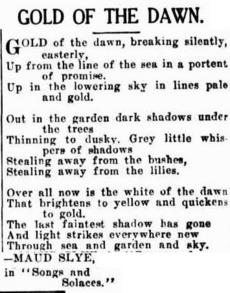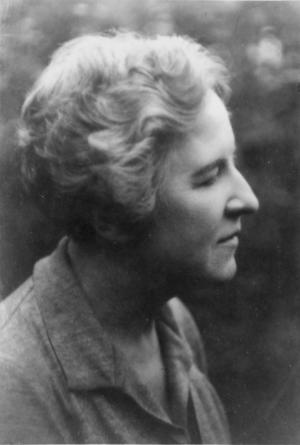This is one of a series of posts written in celebration of Women's History Month, and profiling additions of new images of female scientists added to the Smithsonian Flickr Commons. We invite you to subscribe to The Bigger Picture blog and to the Smithsonian Flickr Commons feed to keep up with new posts and image additions.
Maud Slye, (1879–1954), was a pathologist and tireless cancer researcher whose contributions to the role of genetics and cancer were game changing.
While at the University of Chicago working with Japanese "waltzing mice"—which suffer from a genetic neurologic disorder—Slye became interested in the link between genetic inheritance and disease expression. Her work with cancer, however, was prompted by what she was observing in her own lab mice and a report of cattle from the same ranch who all suffered from the same sort of cancer of the eye. Based on this report and additional scientific evidence, she set out to determine if there was a genetic link to explain why cancer developed in some animals and not in others.
Using her skill in breeding mice (her breeding records and charts are in the archives at the University of Chicago, she was able to develop strains of cancer-prone and cancer-resistant mice and reliably predict which pairings would develop cancer. Her success with the mouse model was compelling and challenged the long-held notion that cancer spread through a contagion. Her findings also led her to advocate for a comprehensive archive of human medical records to identify genetic weaknesses and help control cancer through healthy pairings. As she stated in a January 1937, Time article, "I breed out breast cancers. I don't think we should feel so hopeless about breeding out other types. Only romance stops us. It is the duty of scientists to ascertain and present facts. If the people prefer romance to taking advantage of these facts, there is nothing we can do about it." I bet Eugenicists loved that. But I digress…
Although her exacting work answered some questions regarding why cancers run in families, it was criticized as overly simplistic and not fully appreciative of the complexity of extraneous factors that could also prompt the emergence of cancer. Nevertheless, there was more to Maud Slye than mice and cancer.
Like many scientists, Slye had an artistic and expressive side. Poetry may, on its face, appear to be at odds with her detailed statistical analysis of mouse heredity and cancer, but I think her propensity for it makes perfect sense. Good science and poetry require keen observation, analysis, interpretation, and persuasive presentation for success.
Her two books of poetry, Songs and Solaces (Stratford Co., 1934) and I the Wind: Symphony no. 1 and minor songs (Stratford Co., 1936) are not thin little volumes published by a vanity press. These are substantial works of several hundred pages each and were received well by critics. The poems (what snatches I’ve been able to find) are evocative, romantic, and linguistically rich.
Maud Slye was a complex women who managed to combine the pursuits of truth and beauty and succeeded at both.
Produced by the Smithsonian Institution Archives. For copyright questions, please see the Terms of Use.


Leave a Comment